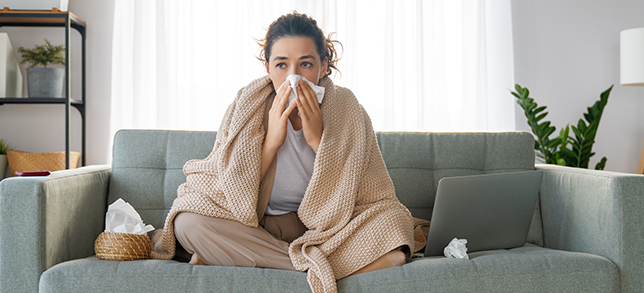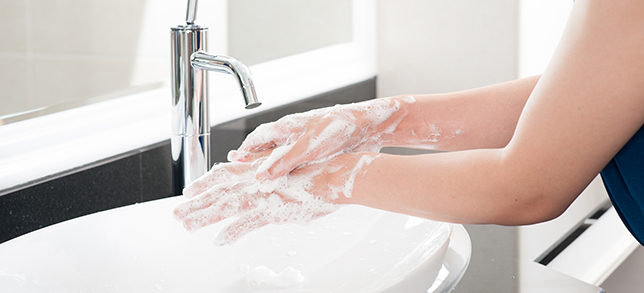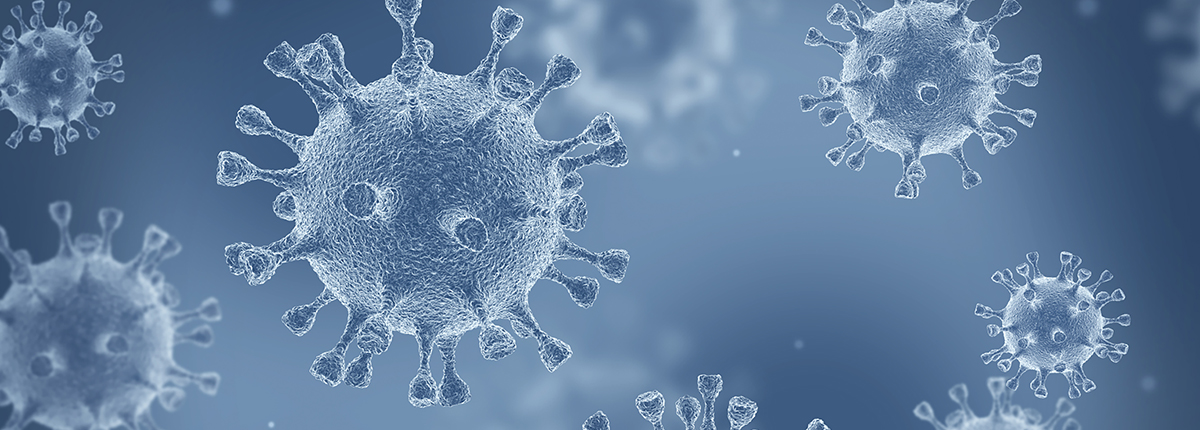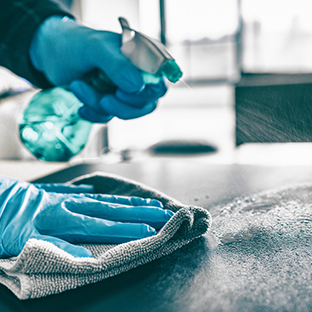What’s the difference between viruses and bacteria?
And how do you protect yourself from them?
Create some engaging blog posts to keep highlighting the importance of the Panasonic products tailored to various situations.
Table of Contents
- Viruses and bacteria are very different
- What is a virus?
- What are bacteria?
- Size - Diseases
- How long do they live outside the body?
- How do they enter your body? - How do you prevent contact with harmful bacteria and viruses?
- The basics: Washing hands with soap, social distancing, wearing a facemask
- Careful food preparation
- Enhancing your immunity
- Clean and disinfect surfaces - nanoe™ X
Viruses and bacteria are very different
We’re surrounded by an invisible world. A world that’s teeming with life. Microscopic organisms surround us, many of which are essential for our day-to-day functioning and health, while some others are harmful. We often hear about bacteria and viruses and may not think about the differences between them – just that they’re unpleasant and we’d prefer to avoid them. That’s understandable.
But the truth is that bacteria and viruses are actually very different. Distinct varieties of each of them either help or harm us in different ways. Exactly how are viruses different from bacteria? And how do we protect ourselves from their harmful forms?
What is a virus?
Viruses are infectious microbes. They only survive when they attach themselves to a host cell. Viruses can infect all lifeforms; they have to reproduce inside the living cells of an organism – whether that’s a plant, animal, fungi, bacterium or human – in order to survive. Otherwise, viruses won’t last long by themselves.
What are bacteria?
Bacteria are single-celled organisms and, unlike viruses, are able to reproduce by themselves. Bacteria are essential to life and the planet – many of them keep us healthy and our bodies running.
They provide us with nutrition, help digest food, fight against microbes that cause disease, and even fight against cancer cells. But while most species of bacteria are harmless, there are some varieties that can be detrimental to our health.
Size
Viruses and bacteria are so small that we can’t see them. But how small are they?
Human cells are around 10,000 - 100,000 nanometres in size. Bacteria are around 1000 nanometres, while viruses are just 100 nanometres.
Diseases

Viruses and some forms of bacteria can create different illnesses.
Diseases that viruses can cause include:
- Colds
- Flu
- COVID-19
- Measles
- Shingles
- Chickenpox
- Ebola
While bacteria can cause:
- Wound infections
- Ear infections
- Urinary tract infections
- Strep throat
- Pneumonia
- Tuberculosis
How long do they live outside the body?
The good news is that viruses can’t survive long outside of the body. They can last for periods of time ranging from a few hours to a few days on surfaces or in the air – but they need to find a host, otherwise they won’t survive.
Bacteria, on the other hand, can survive by themselves – but they need the right environmental conditions to do so, or they’ll die. Different forms of bacteria can live for anything from a few hours to a few months on different surfaces.
How do they enter your body?
Harmful bacteria and viruses can enter your body through your eyes, mouth, nose, wounds, bites and other openings. They get into these openings through your direct contact with them in the form of infected body fluids such as saliva, or through indirect contact on contaminated surfaces.
They can also enter your body through animal and insect bites, inhalation of contaminated air, as well as through consumption of contaminated food and water*¹.
How do you prevent contact with
harmful bacteria and viruses?
We come into contact with these harmful microbes all the time – without knowing it. But don’t worry, you can take simple steps to protect yourself:
The basics: Washing hands with soap, social distancing, wearing a facemask

As you know, germs enter our bodies through openings such as our eyes, nose and mouth. We often touch these areas with our hands, transferring any bacteria or viruses we have picked up from the air or by touching surfaces.
By washing our hands with soap, we protect ourselves from bacteria and viruses that we’ve made contact with. The soap ruptures the membranes of these microbes – killing them. Because these pathogens enter into our bodies through some form of direct or indirect contact, one simple way of protecting yourself is to maintain social distance – something we’re all now quite familiar with!
Bacteria and viruses can also enter through contaminated air or water droplets. Just a few words can spray hundreds of droplets into the air. Wearing a facemask stops these unwelcome droplets from getting in.
Careful food preparation

Pathogens can be passed on by not preparing food safely – potentially causing some nasty illnesses like food poisoning. To protect yourself, it’s vital to prepare food carefully*².
Make sure you:
- Wash your hands before and after touching raw meat.
- Rinse all foods including vegetables, fruit and meat under running water before cooking or eating.
- Don’t use the same cutting boards and cooking utensils for both raw and cooked meat. Wash these items before switching between raw and cooked meat.
- Cook meat thoroughly.
- Defrost food in either the microwave or the fridge.
Enhancing your immunity

Your body has an incredible ability to defend itself. Your immune system can fight off harmful bacteria and viruses – if it’s strong enough.
You can protect yourself by boosting your immune system through:
- Having a healthy diet with plenty of fruit and vegetables.
- Exercising regularly.
- Getting plenty of sleep.
- Limiting how much alcohol you drink and not smoking.
In short: look after yourself and you’ll give your body the best protection*³.
Clean and disinfect surfaces

Since many of these bacteria and viruses can survive on surfaces for a few hours, days, or even months, cleaning and disinfecting surfaces in your environment is a great form of protection. Purchase cleaning and disinfectant products and make a regular habit of cleaning your home. For best results, use a cleaning product on a surface first before applying a disinfectant.
Why? Cleaning products don’t kill bacteria and viruses alone*4. But they can get rid of them from surfaces. And in order for disinfectants to be the most effective, you need to apply them to a clean surface. Disinfectants do kill germs and may need to be left on a surface for a few minutes to complete the task.
*1 https://www.nationaljewish.org/conditions/health-information/health-infographics/virus-or-bacteria-whats-the-difference
*2 https://www.health.harvard.edu/staying-healthy/how-to-prevent-infections
*3 https://www.cdc.gov/nccdphp/dnpao/features/enhance-immunity
*4 https://insights.regencylighting.com/the-science-behind-cleaning-disinfecting-and-protecting
nanoe™ X
While you can clean surfaces, you can’t clean the air, which means harmful viruses and bacteria might still be floating around you. Unless you have nanoe™ X.
nanoe™ X releases molecules called hydroxyl radicals into the air which inhibit certain bacterial growth and certain viruses – even on surfaces. It’s able to inhibit four different types of viruses by 99% in six hours*5. It provides effective protection against some harmful bacteria and certain viruses, so you can rest easy knowing that your air – and your surfaces – are cleaner and safer.
*5 https://www.panasonic.com/global/hvac/nanoe/all/verification/evidence.html
Testing organisation: Charles River Biopharmaceutical Services GmbH. Test subject: Xenotropic murine leukemia virus Encephalomyocarditis virus Pseudororabies virus Porcine parvovirus. Test volume:45 L boc.Test result: Four types of viruses were inhibited by 99% in 6 hours.








